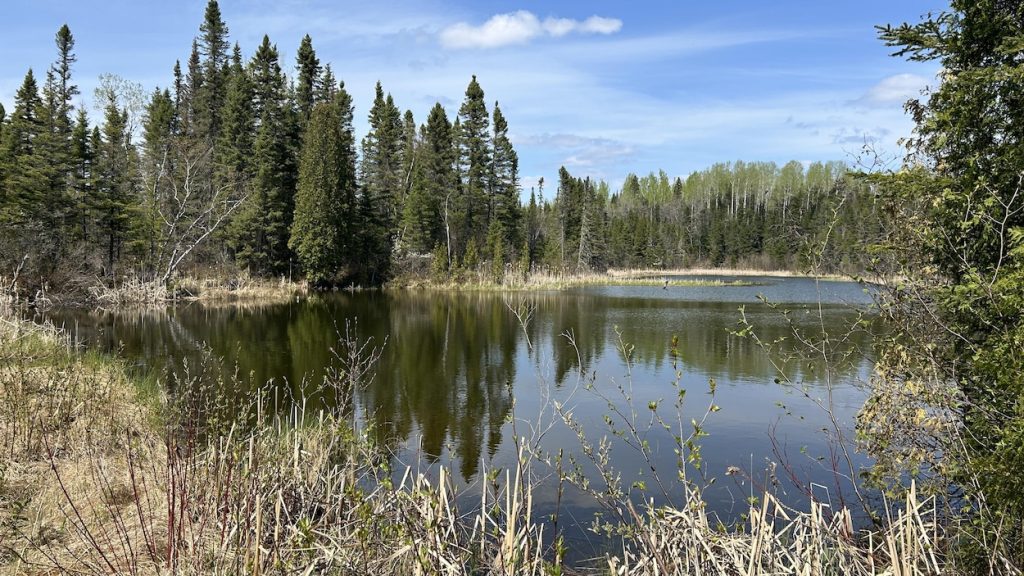
They are good to watch in aquariums, but undesirable in lakes. Goldfish, when released into waterways, can quickly become invasive species. In Saguenay-Lac-Saint-Jean, six lakes are infected.
Most of these are in Shipshaw. The Ministry of Environment, Climate Change, Wildlife and Parks (MELCCFP) has been monitoring Lake Fillion since 2015. At times, hundreds of fish are swimming around the small water lake.
Goldfish in water photo montage.
Photo: Radio-Canada
Within 10 years, goldfish were observed in several other surrounding lakes. They are not in the same watersheds. There is no hydrological connection that explains the natural spread from one lake to another
A biologist observes MELCCFP Anne-Marie Bouchard.

Anne-Marie Bouchard is a biologist at the Ministry of Environment, Combating Climate Change, Wildlife and Parks.
Photo: Radio-Canada / Rosalie Dumais-Beaulieu
It is unclear who is responsible for this contact, but it is certainly human nature.

Goldfish in Lake Fillion (Archives 2015).
Photo: Radio-Canada
Goldfish is an exotic species native to Asia. Its feeding habits contrast with native species found in Quebec lakes.
For food, it moves the bottom of the water, which reduces the amount of light available to the plants, causing them to grow more slowly. It also feeds on fish eggs, larvae and disrupts growing areas for young fish.
It's hard to go back
Found in waterways with plenty of food, goldfish can grow up to 50 centimeters in length. Their color varies from orange-red to olive green or grey.
This change is a sign that the race is well established and going back is almost impossible.
According to Lake Fillion resident Gayton Simard, unlike other years, the fish have not been seen this spring. According to his observations, predators such as minks or fishing birds probably attacked the specimens.

Gaetan Simard has been observing goldfish in Lake Fillion for more than 10 years.
Photo: Radio-Canada / Rosalie Dumais-Beaulieu
But according to Anne-Marie Bouchard, this situation is far from desirable.
This creates an overall imbalance in the trophic chain
She explains.
Dispose of it properly
For those who wish to give up their goldfish, it is recommended that they donate it to a loved one or to a pet store.
Flushing your live goldfish down the toilet is also not recommended as it may end up in the water stream. There are also clove euthanasia techniques to limit animal suffering.
Sentinel Mobile Application MELCCFPThe invasive alien species detection tool allows citizens to report the presence of goldfish in waterways, among other things.





More Stories
Scotiabank customers can't get their pay: “We've fixed the problem”
His wife was badly beaten at CHSLD
Here is my response to Minister Pierre Fitzgibbon's insult about the school tax